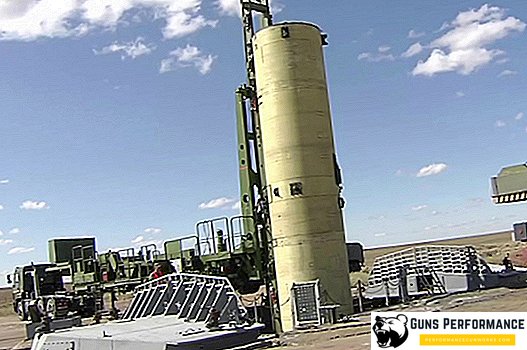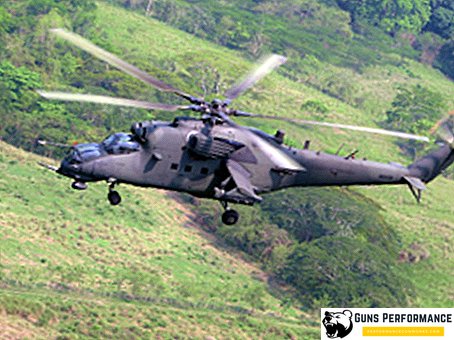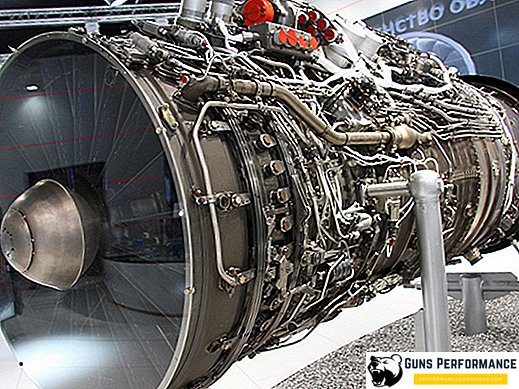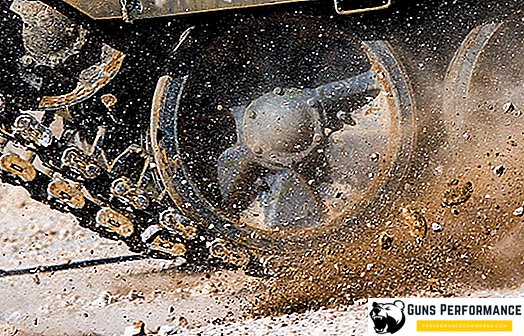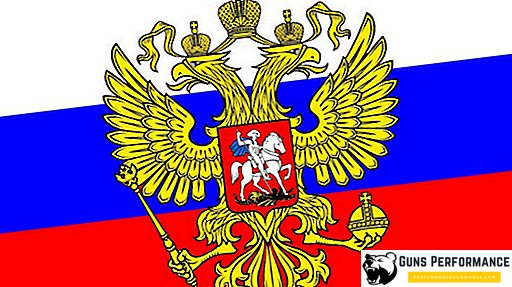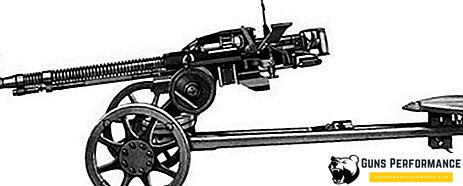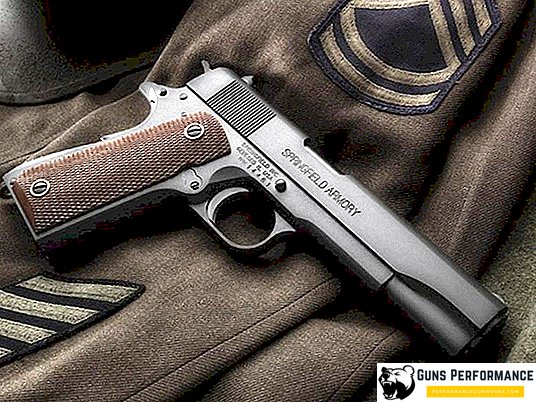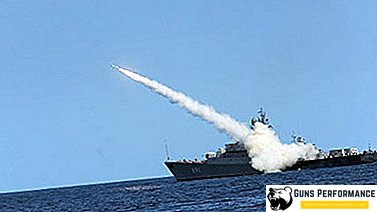The Second World War was the first large-scale conflict in the history of mankind, which completely fell under the definition of a "motor war". Tanks and other types of armored vehicles were the main striking force in the war, this statement is especially true for the fighting on the eastern front. It was tank wedges that were the decisive factor that ensured the implementation of the German Blitzkrieg tactics.

After the catastrophic defeats of the beginning of the war, the Soviet troops urgently needed a means of struggle against German tanks - a simple, effective and maneuverable. The anti-tank guns (PTR) became such a tool. In 1941, two types of these weapons were adopted by the Red Army at once: the PSTD of the Degtyarev system and the Simonov anti-tank rifle. And if the general public is quite well acquainted with the first one (thanks to films, books, and newsreels), the Simonov self-loading rifle is less well known. It was released much less than the PTDB.
A bit of history
The anti-tank rifle is a type of hand-held small arms designed to destroy enemy armored vehicles, and anti-tank weapons can also be used to defeat enemy fortifications (pillboxes and bunkers) and low-flying air targets. Armor penetration is achieved due to the high muzzle energy of the bullet, which is the result of a powerful cartridge and a large barrel length. PTR of the Second World War could pierce armor up to 30 mm and were quite an effective means of fighting tanks.
Some of the PTRs of this period had a large mass and, in fact, were small-caliber tools.
The first PTR appeared from the Germans at the end of the First World War. They were not very effective, but this was offset by the low cost of these weapons, their high mobility and ease of disguise. The Second World War was a real hour of triumph for the PTR, all countries participating in the conflict were armed with such weapons.
In the USSR, the creation of PTR has been actively pursued since the beginning of the 1930s. For the future anti-gun was developed a special powerful 14.5-mm cartridge. In 1939, several samples of these weapons were tested at once. The winner of the competition was the PTRR of the Rukavishnikov system, but its production was never begun. Soviet generals believed that armored vehicles in a future war would have at least 50 mm of armor, which would not allow for the effective use of anti-tank weapons.
This opinion turned out to be deeply erroneous: all the armored vehicles used by the Wehrmacht at the beginning of the war were vulnerable to anti-tank guns (even in frontal projection). Already on July 8, 1941, it was decided to start production of anti-tank guns. Rukavishnikov's PTR was considered too complicated and expensive for wartime conditions, the designers Degtyarev and Simonov were involved in the new competition.

After 22 days, both masters presented their prototype guns for testing. Stalin made the decision to adopt both weapons: the anti-tank gun Degtyarev and the anti-tank gun Simonov.
In October 1941, the Simonov PTR began to enter the army. The first cases of using this weapon showed its high efficiency. In 1941, the Germans did not have armored vehicles, the ability to resist the Soviet PTR. This weapon was quite easy to use, did not require too high training from the fighters, sights were very convenient and allowed to confidently hit targets. At the same time, the zabronevy impact of the 14.5 mm cartridge was repeatedly noted: some of the wrecked tanks had more than 15 holes.
German generals noted the high effectiveness of these weapons, noting that the Soviet anti-aircraft forces significantly exceeded those of the Wehrmacht. Moreover, the Germans willingly put on arms the captured anti-tank rifles Simonov.
Simonov's anti-tank gun was much more expensive and more difficult to manufacture than the Degtyarev PTR, so it was produced in smaller quantities. By 1943, the armor protection of German tanks was significantly enhanced, so the effectiveness of the use of PTR was minimal. Therefore, the production of these weapons is gradually curtailed.
In 1941, 77 pieces were made, in 1942 - 63 308 pieces, before the end of the war, more than 190 thousand guns were made. PTRS were actively used in the Korean War.

Features of the use of PTR
At a distance of 100 meters, this anti-gun shot through 50 mm of armor, and at a distance of 300 meters - only 40 mm. The gun had a good accuracy. However, the Achilles' heel of the PTR was a weak bullet impact from the bullet: there was little to get into the tank, it was necessary to hit one of the crew members or a serious knot of the car. It was complicated.
In addition, the Germans made the right conclusions after the first months of the war and constantly increased the armor protection of their armored vehicles. As a result, it became increasingly difficult to hit her. For this, it was necessary to fire from a very close distance. It was very difficult, first of all, psychologically. The shot of an anti-tank rifle raised whole clouds of dust, which the gunman dragged out. For calculations PTR were real hunting enemy machine gunners, sniper and the accompanying infantry tanks.
It often happened that after repelling a tank attack from an armor-piercing company, not a single fighter was left alive.
Although, in general, the soldiers loved these weapons: it was simple, reliable and quite effective, very maneuverable. Anti-tank guns played an important role, especially at the beginning of the war, it was this type of weapon that helped fight the tank-attack of the Soviet troops. In the last years of the war, when armored personnel did not have much to do with the armor of German tanks, they began to be attracted to destroy ACS, long-term firing points, armored personnel carriers.

general description
Simonov's anti-tank rifle is a self-loading weapon. The principle of operation of its automation is based on the removal of powder gases from the barrel. The barrel is locked by skewing the bolt. The gas piston is located above the barrel. The barrel was equipped with a brake-compensator to reduce the recoil of the weapon.
Power rifle - from the store, the capacity of the box magazine - five rounds. Shooting could be conducted only by single shots. After installing the store, it should be closed with a special lid.
Wooden butt ends with a special pillow, which softened the effect of recoil. Open type sights, the sight is divided into sectors from 1 to 15, each of them corresponded to 100 meters.
Shooting from the PTR was conducted from the stop, for this gun was equipped with folding bipod. Before the receiver on the barrel was strengthened handle for carrying a gun.

Two types of ammunition were used for firing from PTRS:
- cartridge with bullet B-32 (armor-piercing incendiary with a steel core);
- cartridge with a BS-41 bullet (armor-piercing incendiary with a tungsten carbide core).
Specifications
| Caliber, mm | 14,5 |
| Mass | 20,9 |
| Length mm | 2108 |
| Rate of fire, rds / min | 15 |
| Initial speed of a bullet, m / s | 1012 |
| Bullet weight, g | 64 |
| Muzzle energy, kGm | 3320 |
| Penetration, mm: | |
| 300 m | 40 |
| on 100 m | 50 |


